Enron Corporation, an American energy and services company formed in 1985 through a merger, rose to prominence under the leadership of Kenneth Lay. Employing over 20,000 staff, it became a major player in electricity, natural gas, communications, and pulp and paper, reporting revenues of $101 billion in 2000. Enron was lauded as "America's Most Innovative Company" by Fortune for six years. However, the company filed for bankruptcy on December 2, 2001, marking one of the largest corporate failures in history.
1925: Formation of Houston Natural Gas (HNG)
In 1925, the Houston Natural Gas (HNG) corporation was formed from the Houston Oil Co. to provide gas to customers in the Houston market by building gas pipelines.
1930: Formation of InterNorth
In 1930, InterNorth was formed in Omaha, Nebraska, shortly after Black Tuesday, and benefited from low natural gas costs and cheap labor during the Great Depression.
1932: InterNorth Doubles in Size
By 1932, InterNorth doubled in size due to the low cost of natural gas and cheap labor during the Great Depression.
1979: InterNorth Reorganized
In 1979, InterNorth was reorganized as the main subsidiary of a holding company, becoming a diversified energy and energy-related products firm.
1981: Robert Herring Dies; M.D. Matthews Becomes CEO
In 1981, Robert Herring died and M.D. Matthews briefly took over as CEO of Houston Natural Gas (HNG).
1983: InterNorth Merges with Belco Petroleum
In 1983, InterNorth merged with Belco Petroleum Company, a Fortune 500 oil exploration and development company founded by Arthur Belfer.
1984: Kenneth Lay Succeeds Matthews as CEO of HNG
In 1984, Kenneth Lay succeeded M.D. Matthews as CEO of Houston Natural Gas (HNG), inheriting the troubled conglomerate.
May 1985: InterNorth Acquires HNG
In May 1985, Internorth acquired HNG for $2.3 billion, which was 40% higher than the current market price.
July 16, 1985: Internorth and HNG Vote to Merge
On July 16, 1985, Internorth and HNG voted to merge, creating the second largest gas pipeline system in the US at that time.
1985: Enron Corporation Developed
In 1985, Enron Corporation was developed through the merger of Houston Natural Gas and InterNorth, with Kenneth Lay leading the new entity.
February 14, 1986: Lay Announces Interest in 'Enteron' Name Change
On February 14, 1986, Kenneth Lay announced his interest in changing the company name to "Enteron", pending a stockholder vote.
March 7, 1986: Enteron Proposal Rescinded; Enron Name Introduced
On March 7, 1986, a spokesman for HNG/InterNorth rescinded the planned "Enteron" proposal due to scrutiny over its similarity to a medical term. The name "Enron" was introduced as the new name to be voted on in April.
1988: Enron Adds Power Plants and Cogeneration Units
In 1988, Enron added power plants and cogeneration units to its portfolio as part of its efforts to ramp up its electric power efforts.
1989: Enron builds Teesside plant
In 1989, Enron built and operated the Teesside plant, one of the largest gas-fired power stations in the world, which produced 3 percent of the United Kingdom's energy needs.
1989: Skilling Introduces "Gas Bank" Concept
In 1989, Jeffrey Skilling, then a consultant at McKinsey & Company, introduced the idea of the "Gas Bank" to Enron, which was adopted by the company to turn natural gas into a commodity. Also in 1989, Enron began overseas operations with a loan for a power plant in Argentina.
1990: Andrew Fastow Hired by Skilling
In 1990, Andrew Fastow was hired by Jeffrey Skilling to help expand Enron Capital & Trade.
1990: Skilling Hires Fastow
In 1990, Enron's chief operating officer Jeffrey Skilling hired Andrew Fastow.
1991: Overseas Energy Opportunities
In 1991, Enron began seeking new energy opportunities overseas after experiencing stability post-merger. The company's initial venture was a natural gas power plant with cogeneration capabilities near Middlesbrough, UK.
1991: Skilling Joins Enron as Head of Gas Bank
In 1991, Jeffrey Skilling joined Enron as the head of the Gas Bank, following the success of the division.
1992: Indian experts search for energy investors
Around 1992, Indian experts came to the United States to find energy investors to help with India's energy shortage problems.
1992: Energy Policy Act Passed
Under the Energy Policy Act passed in 1992, Congress allowed states to deregulate their electricity utilities, opening them up for competition.
December 1993: Enron finalizes contract with Maharashtra State Electricity Board
In December 1993, Enron finalized a 20-year power-purchase contract with the Maharashtra State Electricity Board to construct a 2,015 megawatt power plant through the Dabhol Power Company. The project was the first step in a $20 billion scheme to rebuild India's power grid.
1993: Fastow Establishes Special Purpose Entities
In 1993, Andrew Fastow began establishing numerous limited liability special-purpose entities for Enron.
December 1994: Joint venture begins between ONGC, Enron and Reliance
In December 1994, a joint venture began between ONGC (40%), Enron (30%) and Reliance (30%) for Panna-Mukta and South Tapti fields discovered by the Indian state-owned Oil and Natural Gas Corporation (ONGC).
1994: States Allowed to Deregulate Electricity Utilities
Starting in 1994, under the Energy Policy Act of 1992, Congress allowed states to deregulate their electricity utilities, opening them up for competition. California was one of the states that chose to do so.
July 1996: Power Deregulation Laws
By July 1996, California, New Hampshire, and Rhode Island had already passed power deregulation laws.
1996: Fortune's Most Innovative Company
Enron was named "America's Most Innovative Company" by Fortune starting in 1996.
1996: Enron International's Contribution to Earnings
In 1996, Enron International was contributing a large share of earnings for Enron, accounting for 25% of the total.
1996: Death of Paul Rand
In 1996, legendary graphic designer Paul Rand died. Enron's tricolor E logo was one of the final projects of Rand.
1996: Indian government assesses Dabhol project
In 1996, when India's Congress Party was no longer in power, the Indian government assessed the Dabhol project as being excessively expensive, refused to pay for the plant, and stopped construction. The MSEB was required by contract to continue to pay Enron plant maintenance charges, even if no power was purchased from the plant.
January 14, 1997: Introduction of New Corporate Identity
On January 14, 1997, Enron introduced a new corporate identity, adopting their distinctive tricolor E logo.
1997: Enron Acquires Portland General Electric
In 1997, Enron acquired Portland General Electric (PGE) to enter the California market.
1997: FTV Communications Constructs Fiber Optic Network
In 1997, FTV Communications LLC, formed by Enron subsidiary FirstPoint Communications, Inc., constructed a 1,380 miles fiber optic network between Portland and Las Vegas.
1997: Rebecca Mark manages Azurix
In 1997, Rebecca Mark resigned as CEO of Enron International to manage Enron's newly acquired water business, Azurix. Mark played a significant role in the development of the Dabhol project in India.
1998: Enron International Acquires Wessex Water
In 1998, Enron International acquired Wessex Water for $2.88 billion.
1998: Enron Begins Operations in the Water Sector
In 1998, Enron began operations in the water sector, creating Azurix Corporation.
1998: Enron Constructs Building in Las Vegas for Fiber Optic Network
In 1998, Enron constructed a building in Las Vegas near E Sahara over the fiber optic cable backbone to service technology companies.
1998: Enron Energy Offers Discounts in California
In 1998, the new Enron division, Enron Energy, ramped up its efforts by offering discounts to potential customers in California.
June 1999: Azurix Part-Floated on New York Stock Exchange
During June 1999, Enron part-floated Azurix Corporation on the New York Stock Exchange.
June 1999: Azurix IPO
In June 1999, Azurix had a promising Initial Public Offering (IPO).
November 29, 1999: EnronOnline launched
On November 29, 1999, Enron launched EnronOnline, an electronic trading platform for energy commodities. It was the first web-based transaction system that allowed buyers and sellers to buy, sell, and trade commodity products globally. At its peak, over $6 billion worth of commodities were transacted daily, but there were concerns about fraudulent accounting practices.
1999: Enron Ends Retail Endeavor
In 1999, Enron ended its retail endeavor as it was revealed it was costing upwards of $100 million a year.
1999: EnronOnline Initiated
In 1999, Enron initiated EnronOnline, an Internet-based trading operation.
1999: Enron's Inflated Assets and Profits
In 1999, examples of Enron's fraudulent accounting practices were identified, including promising to repay Merrill Lynch's investment with interest to show a profit on its books.
1999: Buenos Aires Water Concession
In 1999, the Buenos Aires water concession resulted in substantial amounts of debt and the eventual collapse of Azurix.
January 2000: Enron Announces Fiber-Optic Network Trading
In January 2000, Kenneth Lay and Jeffrey Skilling announced to analysts that they were going to open trading for their own high-speed fiber-optic networks, causing Enron stock prices to rise.
April 2000: Wessex Water Rate Cuts
In April 2000, British water regulators required Wessex Water to cut its rates by 12%.
August 2000: Enron's Stock Price Attains Greatest Value
In August 2000, Enron's stock price attained its greatest value, closing at $90 on the 23rd. Enron executives then began to sell their stock while encouraging the public to buy.
August 2000: Mark Resigns from Azurix and Enron
In August 2000, Rebecca Mark resigned from both Azurix and Enron after Azurix stock took a plunge following its earnings report.
October 2000: Analyst suspends ratings on California energy companies
In October 2000, Daniel Scotto, a utility analyst, suspended his ratings on all energy companies doing business in California. He cited concerns that the companies might not receive adequate compensation under the California Deregulation Plan.
November 2000: Enron traders callous attitude towards ratepayers
In November 2000, traders' callous attitude towards ratepayers was documented in an evidence tape of a conversation, referencing the confusion of retiree voters in Florida's Miami-Dade County during the presidential election.
December 2000: California energy trading deregulation
In December 2000, legislation deregulating California's energy commodity trading was passed, despite warnings from consumer groups. Senator Phil Gramm, whose wife was an Enron Board member, was instrumental in passing the legislation.
2000: Dabhol plant nears completion, Enron executives resign
By 2000, the Dabhol plant was almost complete and Phase 1 had begun producing power. Enron as a whole, however, was heavily overextended, and in the summer of that year Rebecca Mark and all the key executives at Enron International were asked to resign from Enron to reshape the company and get rid of asset businesses.
2000: Fortune's 100 Best Companies
During 2000, Enron was on the Fortune's "100 Best Companies to Work for in America" list.
2000: Enron's Stock Price Decreases
During the summer of 2000, Enron's share prices decreased from US$90.
2000: Wholesale Services Revenue Increase
In 2000, Enron's "Wholesale Services" revenues quadrupled because of Enron's new, unregulated power auction, from $12 billion in the first quarter of 2000 to $48.4 billion in the first quarter of 2001.
2000: Enron Named "America's Most Innovative Company"
In 2000, Enron's claimed revenues neared $101 billion and Fortune magazine recognized Enron as "America's Most Innovative Company" for the sixth consecutive year.
2000: Skilling believed business assets were outdated
In 2000, employees working with company assets were told Jeff Skilling believed that business assets were an outdated means of a company's worth, and instead he wanted to build a company based on "intellectual assets".
2000: Enron's investments in South America and the Caribbean
Through mid-2000, Enron collected a paltry $3.5 million from a $95 million investment in Puerto Plata. Enron also had other investment projects in Europe, Argentina, Brazil, Bolivia, Colombia, Mexico, Jamaica, Venezuela, elsewhere in South America and across the Caribbean.
February 2001: Enron Shares Drop
In mid-February 2001, Enron shares began dropping due to the Broadband Services reporting losses, which was exacerbated by the cancellation of the Blockbuster deal.
March 12, 2001: Enron-Blockbuster Deal Canceled
On March 12, 2001, a proposed 20-year deal between Enron and Blockbuster Inc. to stream movies on demand over Enron's connections was canceled, causing Enron shares to drop.
March 2001: Fortune Magazine Questions Enron's Stock
In March 2001, Bethany McLean's article appeared in Fortune magazine, questioning how Enron made money and whether the stock was overvalued.
June 2001: Enron issues stop-work order on Dabhol plant
In June 2001, Enron issued a stop-work order on the Dabhol plant following a payment dispute with the MSEB.
June 2001: Federal regulators intervene in California blackouts
In June 2001, federal regulators intervened after California experienced 38 Stage 3 rolling blackouts due to a poorly designed market system and manipulation by traders, including Enron. Enron traders intentionally encouraged the removal of power from the market, leading to increased prices and adverse effects on businesses and customers.
July 2001: Enron Broadband Arm Closed
In July 2001, Enron's broadband arm was closed shortly after its meager second-quarter earnings report.
July 2001: Paula Rieker charged with insider trading
In July 2001, former Enron executive Paula Rieker sold her 18,380 Enron shares for $49.77 each, a week before the public was informed about Enron's $102 million loss. Rieker was later charged with criminal insider trading.
August 15, 2001: Enron's Stock Price Decreases
By August 15, 2001, Enron's stock price had decreased to $42.
August 2001: Analyst Questions Enron's Success
In August 2001, Daniel Scotto, an energy market expert at BNP Paribas, issued a note entitled Enron: All stressed up and no place to go which encouraged investors to sell Enron stocks, although he only changed his recommendation on the stock from "buy" to "neutral".
November 28, 2001: Linda Lay sells Enron stock
On November 28, 2001, Linda Lay, wife of Enron's CEO, was accused of selling 500,000 shares of Enron stock, totaling $1.2 million. The proceeds were reportedly donated to charitable organizations to fulfill prior pledges. News of Enron's financial problems became public shortly after the sale, causing the stock price to plummet.
December 2, 2001: Enron Bankruptcy
On December 2, 2001, Enron declared bankruptcy. Prior to this, the company employed approximately 20,600 staff.
December 2001: Enron's business units at bankruptcy filing
At the time of its bankruptcy filing in December 2001, Enron was structured into seven distinct business units, and traded in more than 30 different products including oil and LNG transportation, broadband, principal investments, risk management for commodities, shipping / freight, streaming media, and water and wastewater. Products traded on EnronOnline included petrochemicals, plastics, power, pulp and paper, steel, and weather risk management. Enron was also an extensive futures trader, including sugar, coffee, grains, hogs, and other meat futures.
December 2001: Enron scandal cuts short Dabhol project revival
By December 2001, the Enron scandal and bankruptcy cut short any opportunity to revive the Dabhol project construction and complete the plant.
2001: Enron Bankruptcy
After Enron's bankruptcy in late 2001, EnronOnline was sold to the Swiss financial giant UBS.
2001: Enron Executives Obtain Windfall Gains
Between 2000 and 2001, Enron executives sold a total of $924 million of stocks, obtaining windfall gains from the rising stock prices.
2001: Enron attempts to sell assets
During the summer of 2001, Enron attempted to sell several of Enron International's assets, suspecting it was because Enron needed cash.
2001: Wholesale Services Revenue Increase
In 2001, Enron's "Wholesale Services" revenues quadrupled because of Enron's new, unregulated power auction, from $12 billion in the first quarter of 2000 to $48.4 billion in the first quarter of 2001.
2001: Revelation of Enron's Accounting Fraud
In 2001, it was revealed that Enron's financial condition was sustained by institutionalized accounting fraud, later known as the Enron Scandal.
November 2002: UBS closes EnronOnline
In November 2002, UBS closed EnronOnline, abandoning efforts to relaunch the division after purchasing it following Enron's bankruptcy.
2002: Arthur Andersen Found Guilty of Obstruction of Justice
In 2002, Arthur Andersen was found guilty of obstruction of justice for destroying documents related to the Enron audit.
2002: British Gas acquires Enron's share
In 2002, British Gas (BG) completed the acquisition of EGEP's 30% share of the Panna-Mukta and Tapti fields for $350 million, a few months before Enron filed bankruptcy.
2002: Playboy features "Women of Enron"
In 2002, Playboy magazine featured a nude pictorial "Women of Enron", with ten former and contemporary Enron female employees. The women stated they posed for fun and to earn money.
2002: Switch Communications Purchases Enron's Nevada Facility
In 2002, Rob Roy of Switch Communications purchased Enron's Nevada facility for $930,000 following the bankruptcy of Enron.
2002: WorldCom Bankruptcy
In 2002, Worldcom surpassed Enron with the largest Chapter 11 bankruptcy in history.
2002: Enactment of the Sarbanes-Oxley Act
In 2002, the Sarbanes-Oxley Act was enacted, partially as a result of the Enron scandal, to address accounting practices and corporate activities.
2002: Enron awarded Ig Nobel Prize
In early 2002, Enron was awarded MIT's Ig Nobel Prize for "Most Creative Use of Imaginary Numbers". Former members of the Enron management team refused to accept the award.
2003: The Corporation References Enron
The 2003 documentary "The Corporation" made frequent references to Enron post-bankruptcy.
November 2004: Enron Emerges from Bankruptcy
In November 2004, Enron emerged from bankruptcy under a court-approved plan of reorganization, and a new board of directors changed its name to Enron Creditors Recovery Corp.
November 2004: "Megaclaims Litigation" Initiated
Soon after emerging from bankruptcy in November 2004, Enron's new board of directors sued 11 financial institutions for helping Lay, Fastow, Skilling, and others hide Enron's true financial condition, in proceedings dubbed the "megaclaims litigation".
2005: Ratnagiri Gas and Power finishes Dabhol plant construction
In 2005, an Indian government-run company, Ratnagiri Gas and Power, was set up to finish construction on the Dabhol facility and operate the plant.
2005: Arthur Andersen Conviction Dismissed
In 2005, the Supreme Court dismissed Arthur Andersen's conviction, but the damage to the firm's reputation prevented its recovery.
September 7, 2006: Enron Sells Last Remaining Subsidiary
On September 7, 2006, Enron sold its last remaining subsidiary, Prisma Energy International, to Ashmore Energy International Ltd.
2006: Enron Sells Last Business
During 2006, Enron sold its last business, Prisma Energy, leaving Enron asset-less.
2007: Name Changed to Enron Creditors Recovery Corporation
During early 2007, Enron's name was changed to Enron Creditors Recovery Corporation.
2007: Bee Movie Reference to Honron
The 2007 film "Bee Movie" featured a joke reference to a parody company of Enron called "Honron".
December 2008: Creditors to Receive Liquidation Funds
In December 2008, it was announced that Enron's creditors would receive $7.2 billion from the company's liquidation.
2008: Settlement of Megaclaims Litigation
As of 2008, Enron had settled with all of the institutions in the "megaclaims litigation", ending with Citigroup.
2008: Lehman Brothers Bankruptcy
In 2008, Lehman Brothers surpassed Enron with the largest Chapter 11 bankruptcy in history.
December 2009: Claim and Process Payments Distributed
As of December 2009, some claim and process payments were still being distributed from the "megaclaims litigation".
May 2011: Creditors Receive Additional Funds
By May 2011, $21.8 billion had been distributed to Enron's creditors, totaling 53 percent of the company's debts at the time of bankruptcy.
November 28, 2016: Enron Creditors Recovery Corporation Dissolved
On November 28, 2016, Enron Creditors Recovery Corporation was ultimately dissolved.
2020: Rights to Enron name purchased
In 2020, the rights to the Enron name had been purchased at auction by The College Company for $275.
December 2, 2024: Enron Website Relaunches as Satire
On December 2, 2024, the Enron website relaunched as satire, with Connor Gaydos, the cofounder of Birds Aren't Real, as CEO.
January 6, 2025: Enron to hold "Enron Power Summit"
On January 6, 2025, it was announced that Enron planned to hold a new "Enron Power Summit".
February 4, 2025: Enron launches crypto token $ENRON
On February 4, 2025, Enron launched a crypto token named $ENRON on the Solana blockchain. At one point trading with a market capitalization of $700 million before the price fell at least 76% within 24 hours of launch.
Mentioned in this timeline
California is a U S state on the Pacific Coast...
India officially the Republic of India is a South Asian...

An apple is a widely cultivated edible fruit originating in...
The Dominican Republic is located on the eastern five-eighths of...
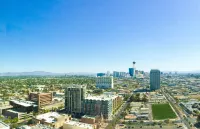
Las Vegas Nevada's most populous city and the seat of...
Argentina officially the Argentine Republic is located in the southern...
Trending
5 months ago TJ Watt becomes highest-paid non-QB after extension; JJ Watt reacts hilariously.
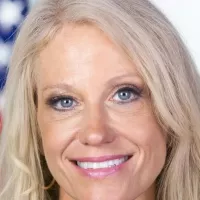
8 months ago Conway Compares Smith to Obama and Trump; Predicts Trump's Endorsement in NJ.
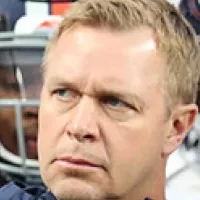
Marc Bronco Clay Mendenhall is an American college football coach currently leading Utah State University's team Before this he held...
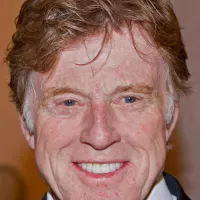
5 months ago Sundance Film Festival's Final Utah Edition: Egyptian Theatre Excluded, Gratitude Celebrated.

7 months ago Walker Buehler Ejected; Refsnyder Livid; Buehler, Lindor Exchange Words After Pitch

Lacey Nicole Chabert is an accomplished American actress known for her roles from a young age She began her career...
Popular

Tucker Carlson is an American conservative political commentator known for...

Candace Owens is an American conservative political commentator and author...

XXXTentacion born Jahseh Dwayne Ricardo Onfroy was a controversial yet...

Ben Shapiro is a prominent American conservative political commentator media...

William Franklin Graham III commonly known as Franklin Graham is...
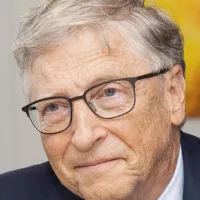
Bill Gates an American businessman and philanthropist revolutionized personal computing...